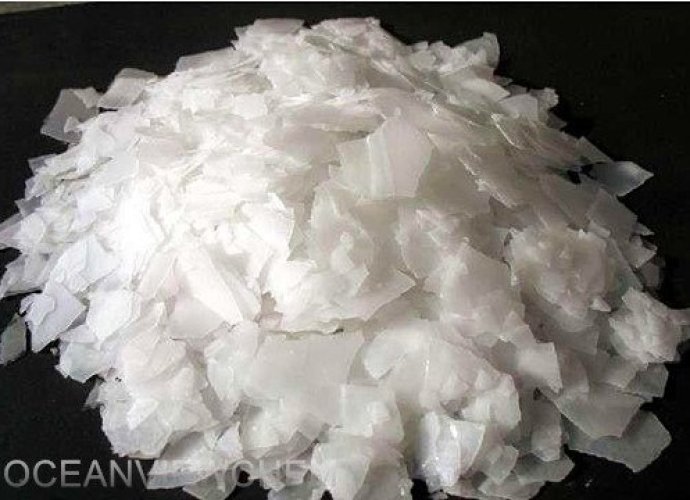Potassium Hydroxide or Caustic Potash (KOH) is a basic alkali. Its advantage over caustic soda (NaOH) is the increase of K+ ions while providing pH control.
Like this page? Share it with your friends!
Potassium Hydroxide or Caustic Potash (KOH) is a basic alkali. Its advantage over caustic soda (NaOH) is the increase of K+ ions while providing pH control. Potassium Hydroxide is a strong alkali used to increase pH and alkalinity of drilling, workover and completion fluids.
Potassium hydroxide is a corrosive material and should be used with extreme caution. It should not be mixed through the mud hopper but should be dissolved in water in a chemical barrel. One sack should be added very slowly with careful agitation to the fluid. The solution can then be added to the mud system.
APPEARANCE | Orderless white flakes |
TYPE | Alkali Hydroxide |
PH | 12.0 (0.01 moles/litre) |
SPECIFIC GRAVITY | 1.5 - 1.66g/cm3 |
MELTING POINT | 212 - 307°F |
MELTING POINT | 716°F |
SOLUBILITY | Soluble in water |
Applications/Functions
• Used to increase the pH in place of caustic soda in potassium-base muds
• Replaces the sodium hydroxide because the potassium ion has strong inhibition than sodium ion as a shale inhibitor
Advantages
• Provides potassium ion as a shale inhibitor
• Controls the pH and alkalinity properties of drilling fluids
Typical Properties
• Appearance: White flakes
• Solubility in water: Completely
• Specific gravity: 1.45
Recommended Treatment
• Typical concentrations range from 0.25 to 4.5 ppb with treatments depending on type of drilling fluid
• Potassium Hydroxide should be added very slowly and notice the PPE requirement
Potassium Hydroxide is available in 25 kg sacks, palletized as 40 sacks per pallet.




